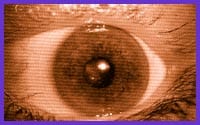What a wild and weird film is Eyes Wide Shut.
Stanley Kubrick’s psychological thriller is a light-filled expedition into the dark recesses of society; a slow, inexorable stab at its shriveled heart – shame.
Veering from brilliant to banal, Eyes Wide Shut is almost always compelling, due to the design and cinematography (especially the use of light), Nicole Kidman’s performance and some intriguing emotional insights.
Where Eyes Wide Shut succeeds most is in its examination of masks, both public and private. Kubrick strips away layer upon layer of guises and self-deceptions employed by a happily married and successful middle-class couple, Dr William Harford (Tom Cruise) and his wife Alice (Kidman).
The film opens on a mundane, slightly testy moment between the implacably beautiful duo dressing hurriedly. They swoosh through their expensive apartment, pat their perfect child on the head, and off they go to a swank, Christmas-season party. Upon entering, their faces – masks of incandescent marble – come alive at the hoped for and expected admiring glances. It’s the happiest scene they share with one another.
Masks signify both shallow deceits and powerful magic. The good doctor has perfected his professional face to such an extent that it can heal the sick (later, at the party, he talks a hooker out of a drug overdose) and comfort the grieving. Publicly, Bill always expresses (as distinct from feels) the right stuff.
Kidman, too, has perfected her mask, looking effortlessly gorgeous and alluring in every frame. She plays the consummate, contented wife. But she develops the endearing habit of confessing, in graphic detail, her adulterous fantasies. With hubbie showing a distinct lack of imagination, the confessions propel him down a spiral into near depravity.
Eyes Wide Shut argues that little white lies and dark secrets between two people (or told to oneself) can keep a relationship going, just as well as honesty and openness can.
With the film’s references to Adam and Eve and forbidden fruit, shame – at one’s true self, at one’s nakedness – nestles within the sweaty bosom of sex. Hence all the prurient hoopla around the film’s making.
And while never fully embracing homosexuality, Eyes Wide Shut’s homo references are significant.
An evening of presumably innocent flirtation is precipitated by Bill and Alice going their separate ways at the party. Bill recognizes an old school chum, Nick Nightingale, but when Bill invites his wife over to meet Nick, she wants nothing to do with it. Why the frostiness? We never know.
We do know that Nick the pianist, though married with kids, is on the road a lot and, when in New York, stays in the village at a hotel with the campiest concierge ever. The film is worth seeing just to watch Alan Cumming devour Cruise with every glance.
It’s through Nick that Bill gains access to a world of sexual depravity hitherto unthinkable.
Then there’s the much hyped sex scene between Cruise and Kidman. The sex isn’t cold as some detractors have said, but calculating, predictable, sort of what you’d expect after eight years of marriage. Up against the mirror, Alice checks out the reflection of her husband’s hard body; intriguingly, so does her husband. Narcissistic, yes; homo subtext, again, who knows?
Poor Bill. Still reeling from his wife’s confessions, salt gets rubbed into his emasculating wounds as he is gay-bashed, called a “faggot” and a “little man” by a threatening group of young yahoos on the street.
Bill can’t shake the image of his naked, adulterous wife, nor can he erase the image of her loverboy, either (who’s also naked in Bill’s mindseye by the end of the flick). It’s a strong argument that (straight male) jealous rage is somehow connected to homo panic.
Then comes the dawning realization that Cruise is playing the role of a respected, envied professional forced to keep sexual secrets at the behest of a clandestine, almost religious, brotherhood. Call the Scientology hotline! In addition to the continuing rumours of Cruise’s and Kidman’s homosexuality, as Scientologists, the couple is also connected to the equally persistent rumour that Scientology offers celebrities a way to keep their homosexuality in check and/or under wraps.
Masks within masks within masks.
The big problem with Eyes Wide Shut is its anachronistic portrayal of gender and sexual politics. They seem fashioned in the 1950s (or, the 1920s when the original Arthur Schnitzler novella is set). Granted, the film is told from Bill’s perspective, but please: All females are whores; all males are liars? (Luckily, homos are placed on the side of the whores.)
And don’t even mention the laughable AIDS reference, which helps tip the film from surreal to so wrong. Which leads to the grand sex ball that, despite its masked, ritualistic sex, ends up being totally vanilla. Straight pairings and the missionary position is as kinky as it gets.
(The only gay coupling is two waltzing gentlemen. Yeah, right. A secret sex sect and the only homos are in the slow dance room?)
In Kubrick’s telling of the story, however, the real charge is not the sex, per se, but the anonymity – just what every cheatin’ man wants.
Perhaps the sexual politics aren’t that dated. Kubrick must be spinning in his grave at the censorship of the crucial sex party scene in the North American release. Placing computer generated figures in front of all the fucking that Bill witnesses, makes an already shaky scene hurtle into the ridiculous.
Obviously shame, in all its old-fashioned, Biblical ways, is alive and well.
Though dissatisfying, Eyes Wide Shut is a timely, must-see film.


 Why you can trust Xtra
Why you can trust Xtra


